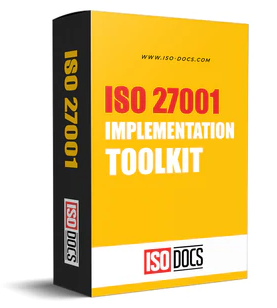ISO 27001 vs ISO 27002: Key Differences Explained
Introduction
Both ISO 27001 and ISO 27002 are extremely critical in safeguarding today's business environment from the persistent cyber threats that now characterize the operating environment. However, it should be noted that even though these key international standards are closely related, they have notable differences and, as a result, also serve different purposes. Understanding these differences helps business and technology leaders to effectively combine these standards for effective cybersecurity strategy execution. This article dives into the differences between these two standards.

Key Differences
The following are the key differences between ISO 27001 and ISO 27002 that implementers, auditors, users as well as business leaders of these two standards should understand;
-
Focus: ISO 27001 focuses on the leadership and management requirements for implementing an Information Systems Management System (ISMS) within an organization. Hence, in its mandatory clause, it addresses key aspects such as leadership, risk management, and performance management. internal audit and continuous improvement. In contrast, ISO 27002 does not focus on the mandatory clause but only on ISO 27001’s Annex Controls. In fact, ISO 27001 complements focuses on providing implementation guidance for controls listed in Annex A of the ISO 27001 standard.
-
Audience: Because ISO 27001 is specifically targeted at providing the necessary conditions for implementing an ISMS, it deals with policy and strategy formulation and hence is targeted at senior management, such as the executive team and the board of directors. On the other hand, ISO 27002 is aimed at IT and security practitioners who need detailed control implementation guidance. In a way, ISO 27001 is high-level, while ISO 27002 is tactical and operational level.
-
Intent: The intent of ISO 27001 is to specify the requirements for establishing, implementing, maintaining, and continually improving an ISMS, hence its name – ISO 27001 – Information security, cybersecurity and privacy protection – Information security management systems – Requirements. On the other hand, ISO 27002 – Information security, cybersecurity and privacy protection – information security controls, as its name implies, is an implementation guidance standard that elaborates on how to implement the Annex A controls specified in ISO 27001.
-
Content: The key areas of focus for ISO 27001 are on leadership and management-level, such as setting the scope, formulating an Information Security Policy, risk assessments, management commitment, leadership, and continual improvement. It only provides the controls as an annexure at the end of the standard, that is Annex A. In contrast, ISO 27002 specifically addresses ISO 27001 Annex Controls and provides best practices, control objectives, and guidance on technical and operational aspects.
-
Certifiability: The question that usually arises among both practitioners and users of the two standards pertains to which one to certify against. Of these two key standards in information security, ISO 27001 is the only standard of the two that organizations can get certified against. An organization cannot certify itself against ISO 27002. This is because the standard was promulgated only to support an organization’s ISO 27001 certification efforts and not to be implemented as a standalone standard. The certifiability aspects should be as clear as possible to both information security as well as business leaders.
-
Documentation: Another key difference between these two standards is that ISO 27001 mandates documented information such as the Statement of Applicability (SoA), risk assessment reports, internal audit, and ISMS policies. Because ISO 27002 serves as a reference for creating detailed operating procedures and guidelines, it does not mandate that an organization keep mandatory records for certification purposes. In any case, the guidance is only provided as best practices in the profession that assist in obtaining ISO 27001 certification.
- Relationship with other standards: It should also be noted that while ISO 27001 is used strictly for certification purposes, ISO 27002 can be used independently as a security baseline or in combination with frameworks such as NIST CSF or CIS Controls. This approach is mainly taken by those organizations that are not seeking certification but still want to ensure a secure control environment. Such organizations usually map the ISO 27002 controls with other framework controls to identify gaps to be covered before implementation.
Conclusion
As this article has shown, the organization needs to understand the key differences between ISO 27001 and ISO 27002. The key takeaway for this discussion are that an organization does not necessarily have implement ISO 27001 in isolation, there is ISO 27002 to assist in the implementation process. Understanding and combining the provisions of both standards allows organizations to effectively implement the provisions of ISO 27001 and smoothen the certification process.


